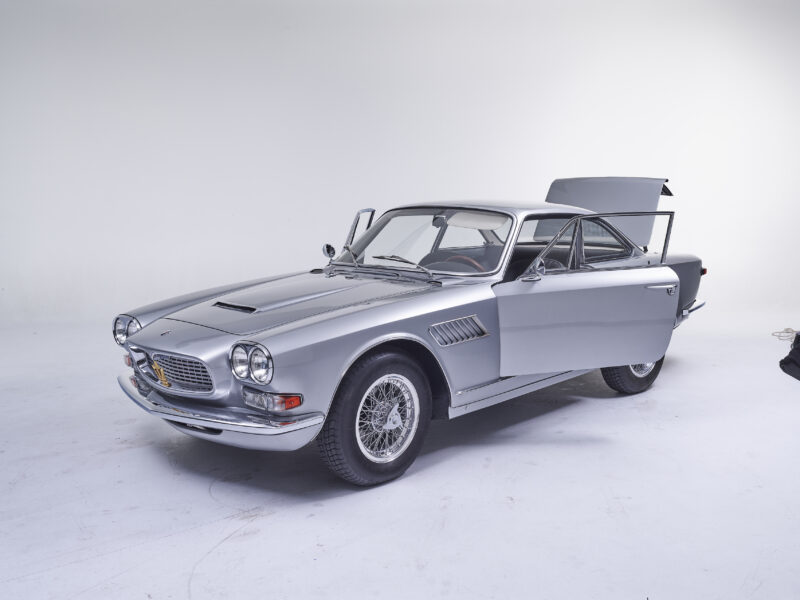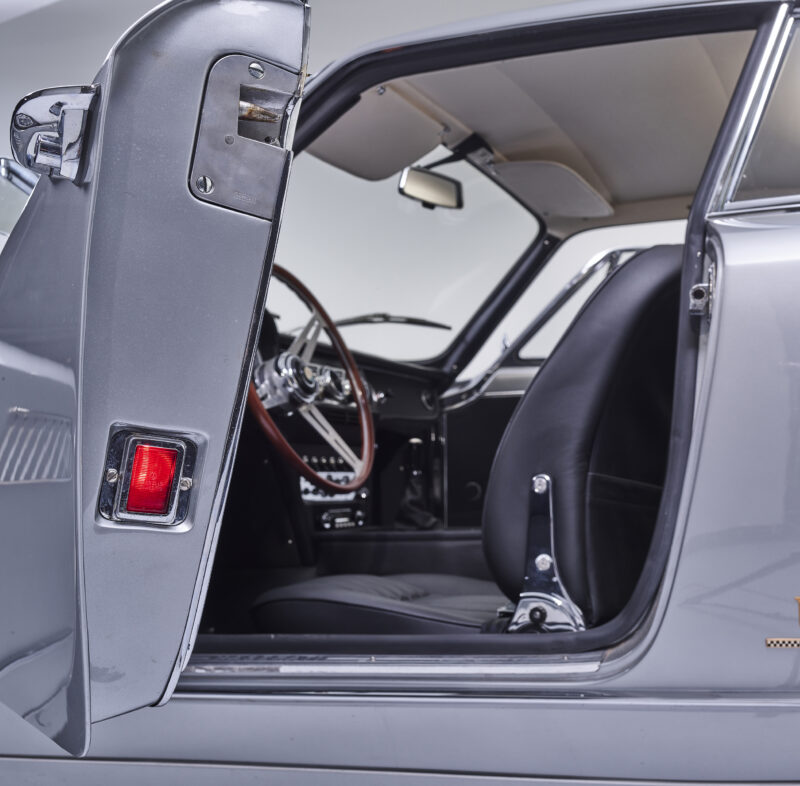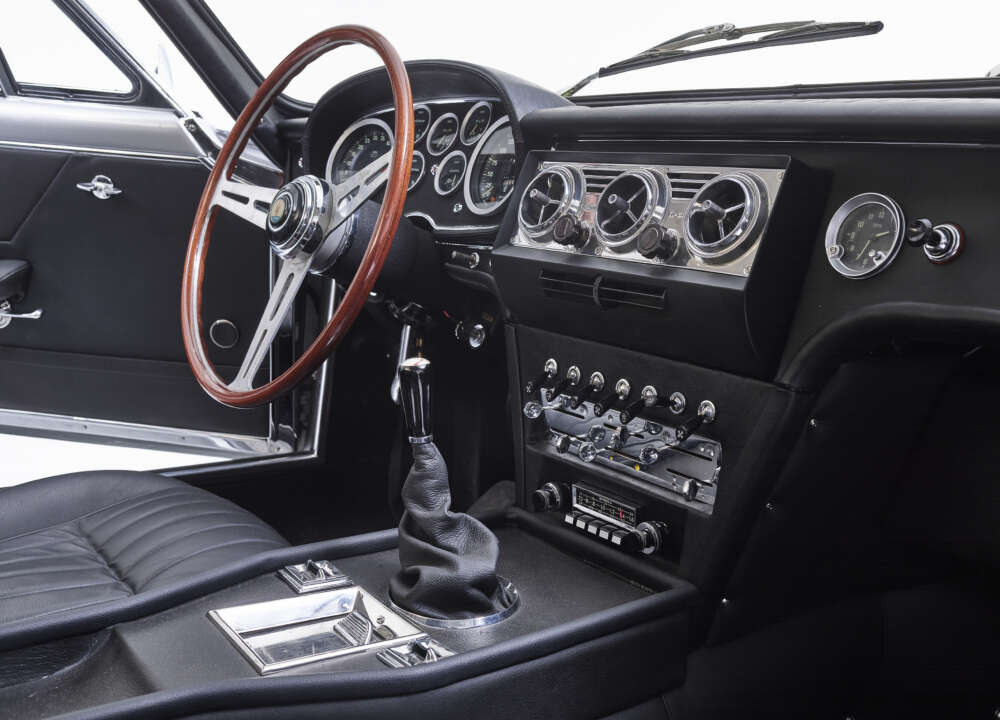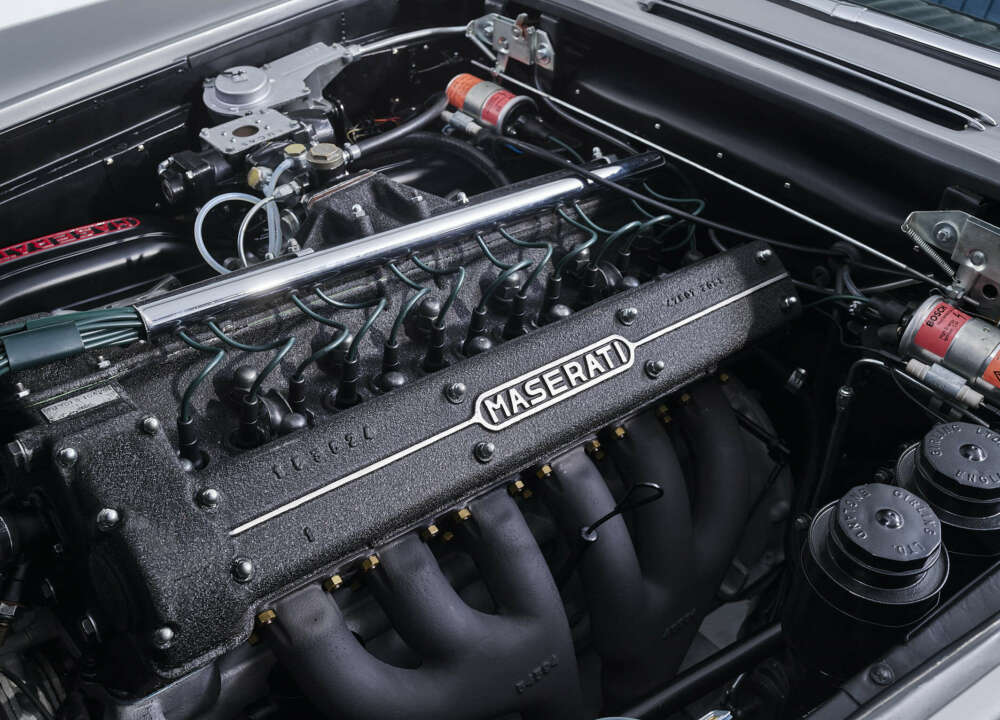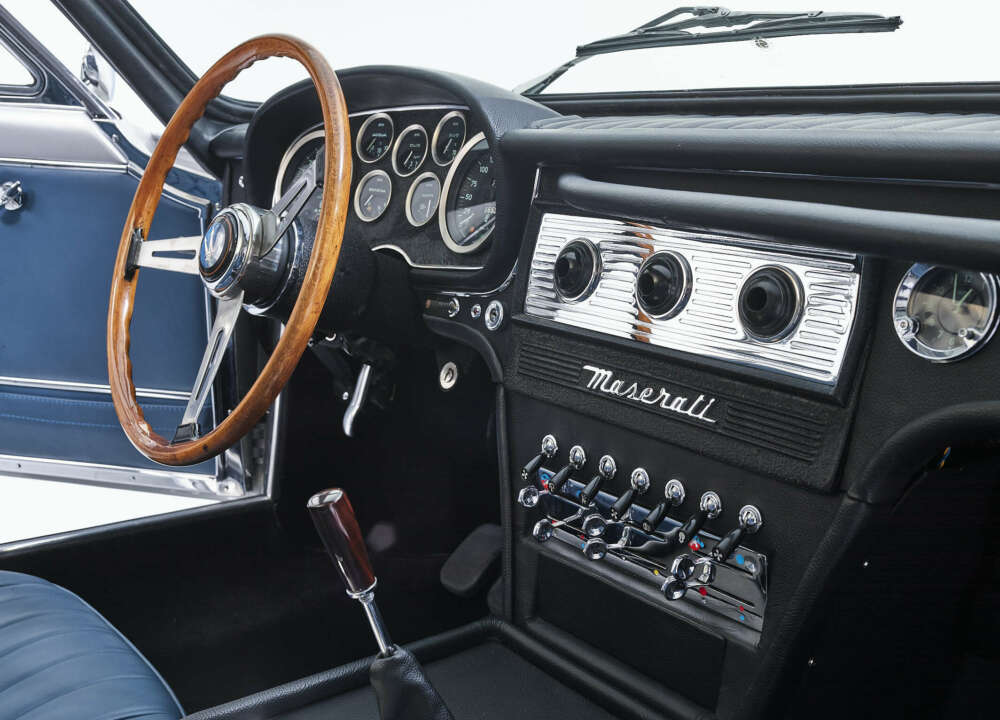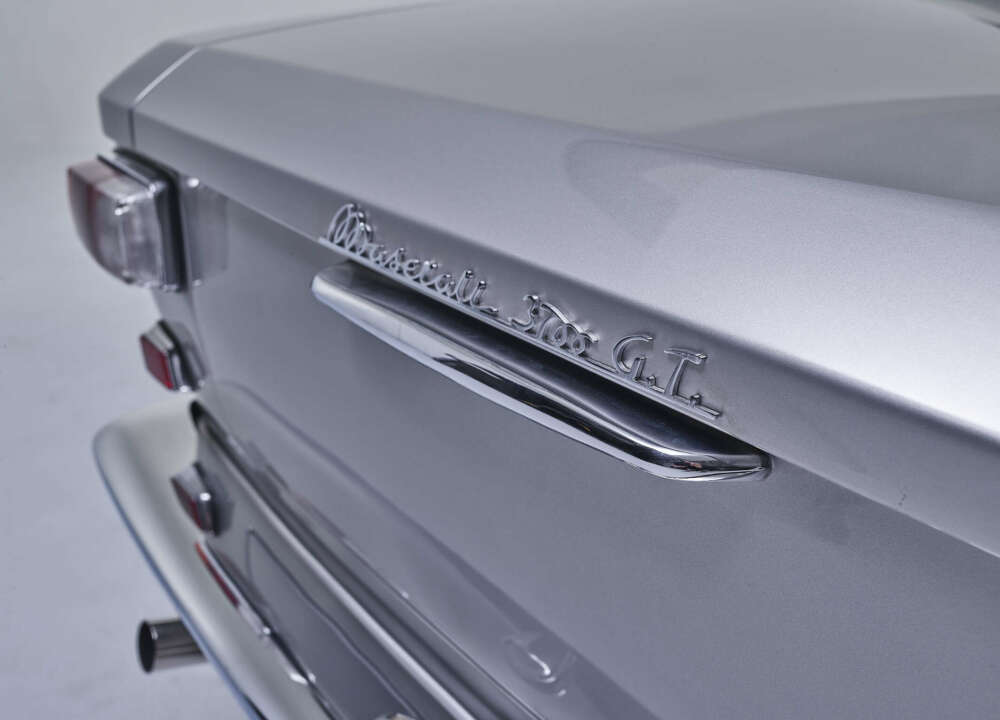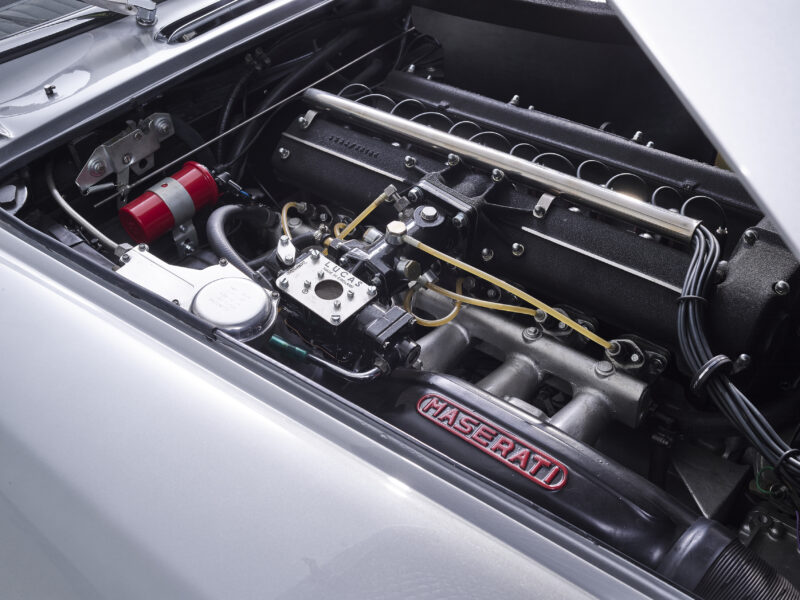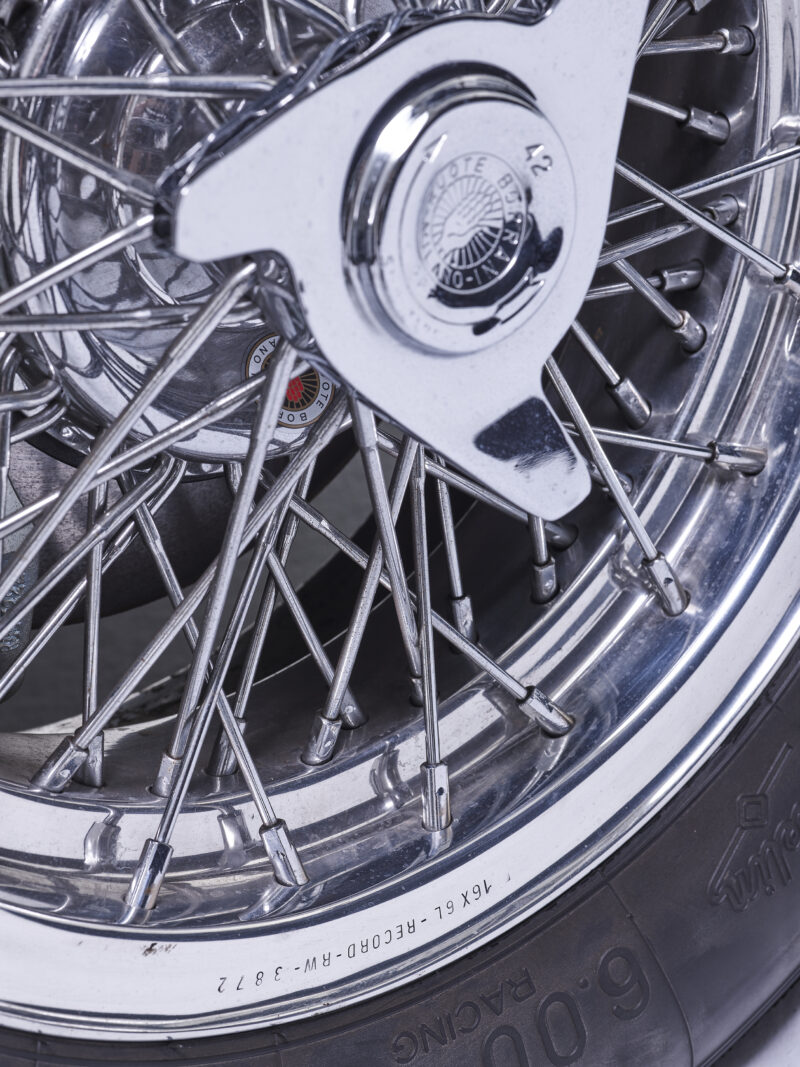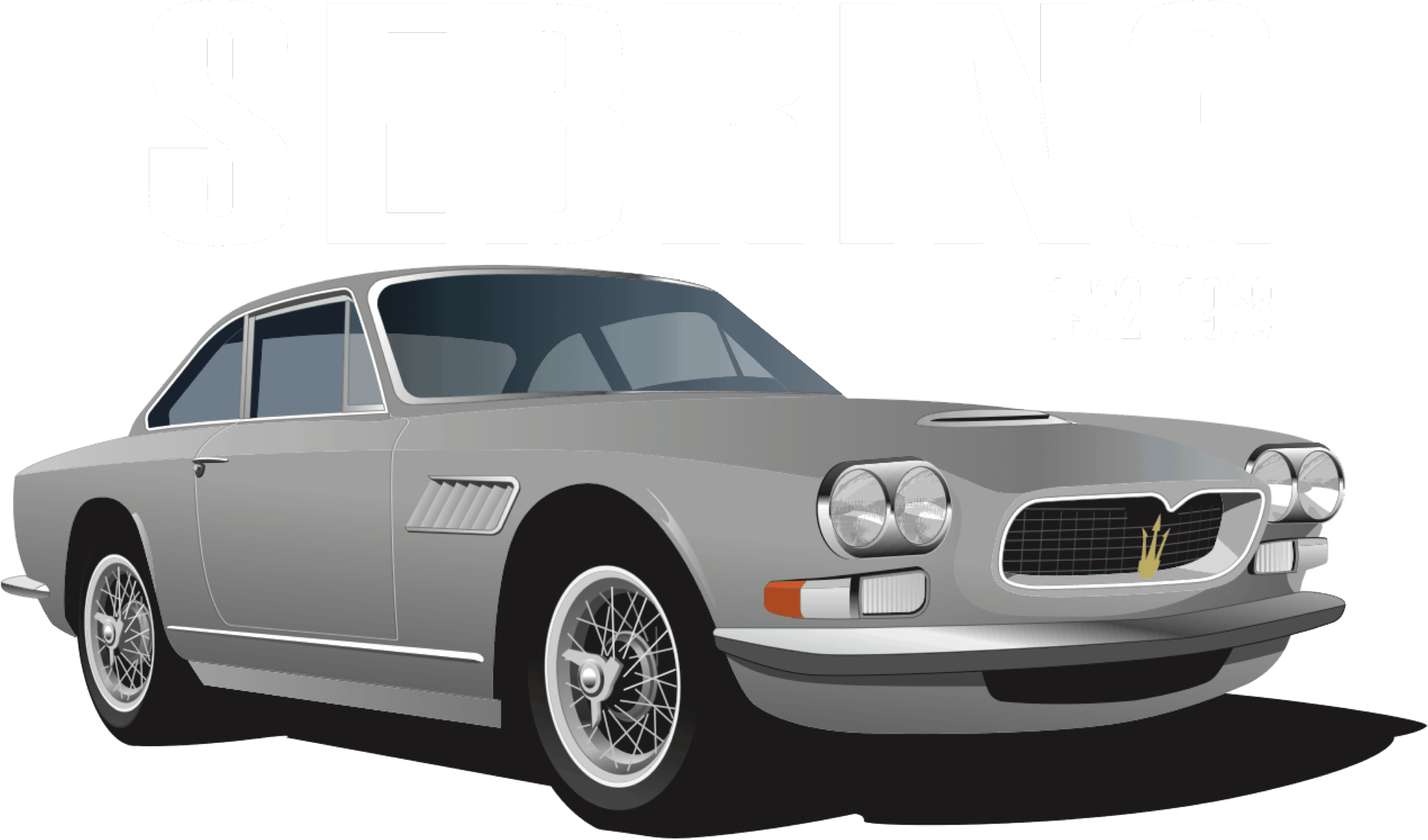
The ultimate evolution of the 3500GT theme.
The Sebring was named after the Florida air base circuit where Juan Manuel Fangio and Jean Behra scored a historic victory in the 12 hours in 1957 aboard a mighty 450S. It was born at the demand of Omar Orsi who wanted an even sportier model aside of the mainstay 3500GT.
To ensure a visually different style the 3500 Vignale Spyder chassis was chosen for its ten centimetres shorter wheelbase. This was to favour more agile handling and also to allow a visually more compact and suggestive design. The latter was carried out by Vignale through the hand of Giovanni Michelotti. The steel body distinguished itself by two separate headlights per side and side vents low in the sills behind the front wheels discreetly blending in the body. The rear end of the carrozzeria leans backwards, beyond vertical, an astonishing yet alluring touch. It was a radical departure by Michelotti compared to his Vignale Spyder. The angle chosen for the Sebring remained very rare in automotive design at least in that era. The rear lights sat one above the other in a vertical chrome bezel.
Only 6 Sebrings had triple Weber carburettors: 4 cars of series 1 with the 3.5-litre engine, one car of series 2 with the 3.5-litre engine and one car of series 2 with 3.7-litre. Possibly due to Customers' request. It was the Lucas fuel injection which ruled the roost.
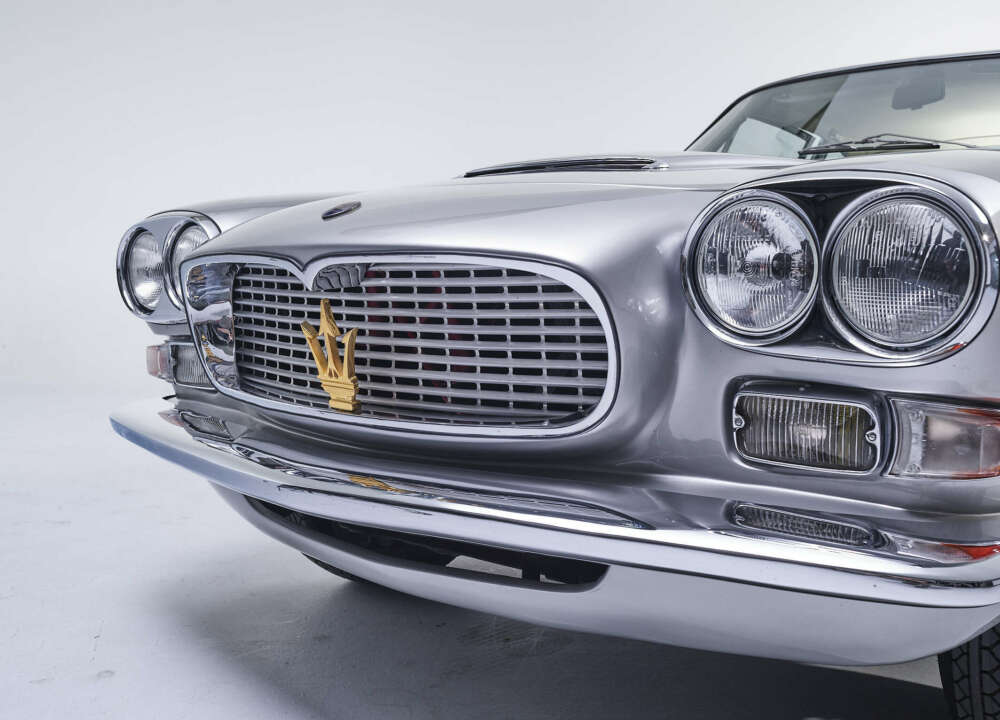
In late 1964 a new larger 3.7-litre version of the engine with a longer stroke was inaugurated in the Sebring. That year only one car of the Series 2 received that new engine, from 1965 all Series 2 cars were fitted with the 3.7. It would see use in other models after that. Air conditioning was an option very much needed in the USA. The unit was very efficient for its day, albeit admittedly not on the level of the industrial-strength blizzard producing ones fitted in American cars.
Surprisingly and for the first time in any Maserati, a Borg-Warner three-speed automatic gearbox could be ordered. It was also the first Italian sportscar to be thus equipped. While purists may protest and rant, it served a need and provided sales that would otherwise not have materialized, thus helping the factory.
The Series II introduced in 1965 featured some styling changes. These changes allowed to implement a family-style across the range by adapting styling cues of the new Quattroporte to the Sebring. The most visible manifestation of that policy was that the headlight pairs were now "twinned" on a chrome frame just like the Quattroporte. The indicators and sidelights were also similar to those of the four-door. At the same time, the air vents on the side were higher up, shorter and surrounded by chrome. The much lower bonnet air intake was no longer V-shaped. At the rear, the curves were sharper, and the lights were Quattroporte units as well.
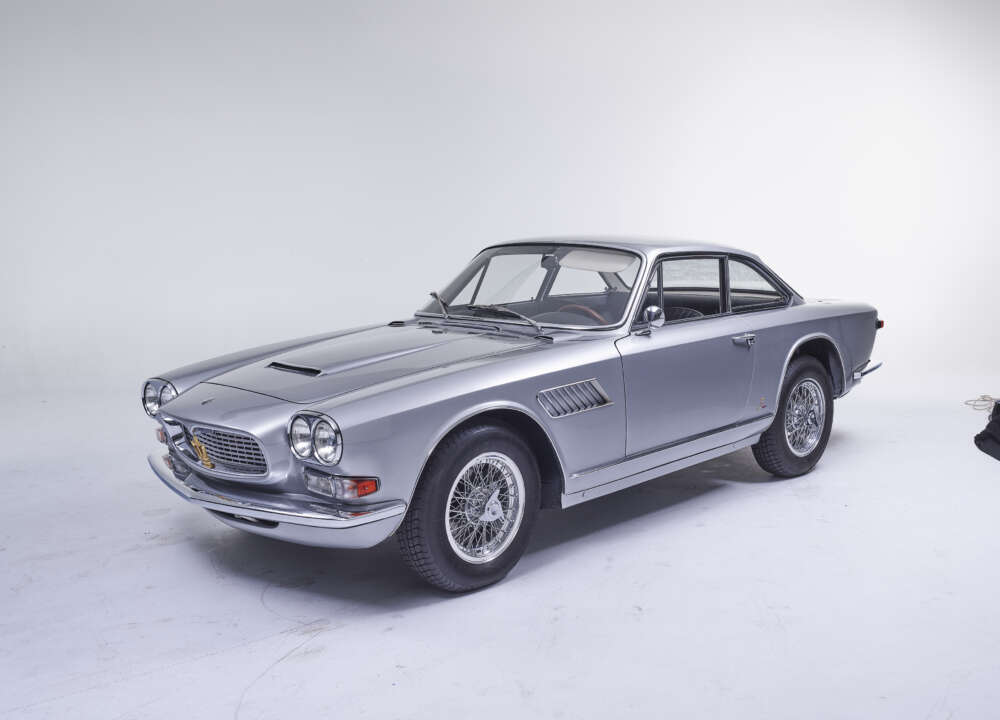
The final version of the Sebring appeared in 1966 with a four-litre engine version (4014cc) with power up to 252hp. There were only small detail differences between the early and last Sebrings. Mostly because the budget was tight at the time just before the Citroën takeover. All Sebrings benefit from a large boot as befits a Grand tourer. At the wheel of any Sebring, you feel the shorter chassis which gives it more agility. The beautiful sound of that inline-six seduces your ears as you head to your destination with eager haste and perfect ease. It is like a 3500GT which was hard to improve, but the Sebring was conceived specifically for that reason. And did so successfully!
Specifications
A total of 600 Sebrings (series 1 and series 2) were built between 1962 - 1968.
Series 1: between 1961 – 1964 351 cars were built.
Series 2: between 1964 – 1967 94 cars were built with 3.5 engine, between 1965 – 1968 134 vehicles were built with 3.7 engine, between 1966 – 1968 19 cars were built with 4.0 engine.
Clients could choose wire or disc wheels. Differential ratios can vary according to what a client ordered, and top speed can vary considerably from car to car. There were very few special versions; Frua did try their hand at a Sebring design, but it never went beyond the single built prototype. Sebrings did not see much use in films. Apart from limited appearances only the 1963 Italian movie La baby sitter featured one at length in a kidnapping story.
Engine
Six cylinders, in-line, light-alloy block
3485 cc, also 3694 and 4014 cc from 1965
Power output: 235 hp; evolved to 245, 255, 265 hp
Body
Two-door Coupé, 2+2, in steel with an aluminium bonnet and boot skins
Designed by Vignale
Performance
235 kph to 255 kph
Competitors
Quite obviously it has the same competitors as the 3500GT, but we could add the AC428 designed by Frua (resembling the Mistral offering) with large US V8 7-litre engine. But you have to find one as only 81 were made and far fewer remain. None sold at auction in recent years making valuation difficult. The Jensen Interceptor crossed path with the Sebring in 1966-67 with its 6,3 or 7,2-litre V8 Chrysler engines. These were well built but felt much heavier, lacked the agility of a Sebring and used seemingly double the fuel. They can be found from 50.000 to 70.000 Euro and are often in need of much-deferred maintenance.
Valuation
No less than eleven Sebrings were offered at auction in the 2016-17 season eight in Europe, three in the US. Five did not sell during that time of market readjustment when seller's expectations were considered excessive by buyers. One sold well at Zoute Belgium in 2016 for 241.500 Euro. One sold at 201.600 Euro during the notoriously successful Due Mille Ruote auction of seized cars.
A fine example sold for 226.480 Euro at a Paris auction. Two others sold for 130.999 and 160.400, while a project sold for 68.160 in a minor Monterey auction (Mecum).
In the 2017-2018 auction season, seven were offered and five sold, an upswing as value readjustment had settled. One reached Euro 306.170 in a small UK auction in September 2017. Still, the others nevertheless retained strong values varying between Euro 180.429 (Connecticut, USA Bonhams, June 2018) and another sold by Bonhams but at the Goodwood Revival, UK in September 2017 for 240.922 Euro. Values remain bullish because casual newcomers to the classic Maserati universe rarely buy Sebrings. They tend to be acquired by people who know what they want and are ready to pay for it.
We are aware that the valuation of this car is very subjective and depends on many criteria. That is why auctions are used as a barometer to sense where the market is moving. However, premium restored or preserved classic Maseratis change ownership through private sales ( and seldom in an auction). As a result, rarely do we discover the price for an off-market transaction.
Persuasion
Long forgotten or relegated to niche market status they seem to have suddenly become popular in recent years. They are in fact one of the most commonly seen classic Maseratis in Concours on both sides of the Atlantic but even more so in Europe. This is understandable. They are unique in the sense that they stand apart in the classic Maserati family tree, benefit from the full cycle of 3500GT development. Last but not least, they are handsome and more sporting to drive.
Initial texts by Marc Sonnery.
Registry
This registry is in the hands of the Classiche Masters team and was first started in June 2020. So if you have information about these cars please mail info@classichemasters.com or go to https://join.classichemasters.com/c/sebring-registry/ . A one-time free registration is required.

